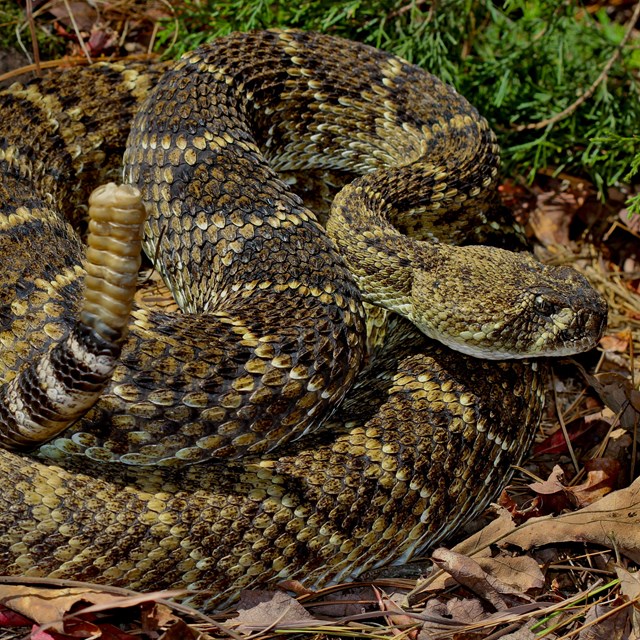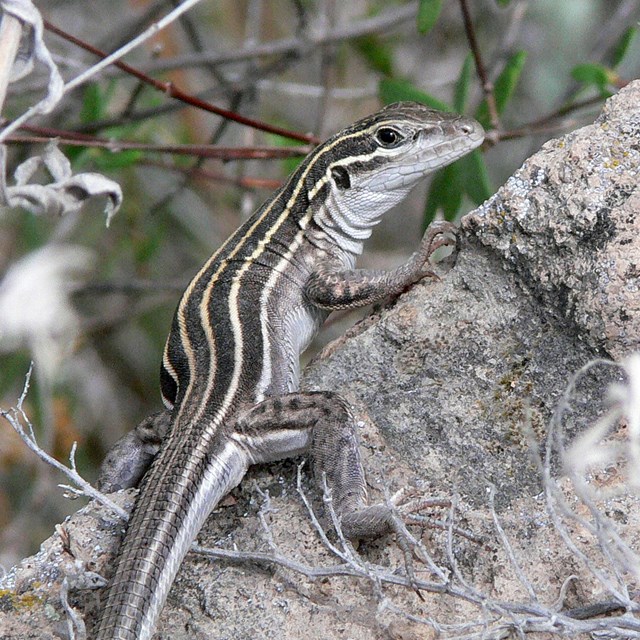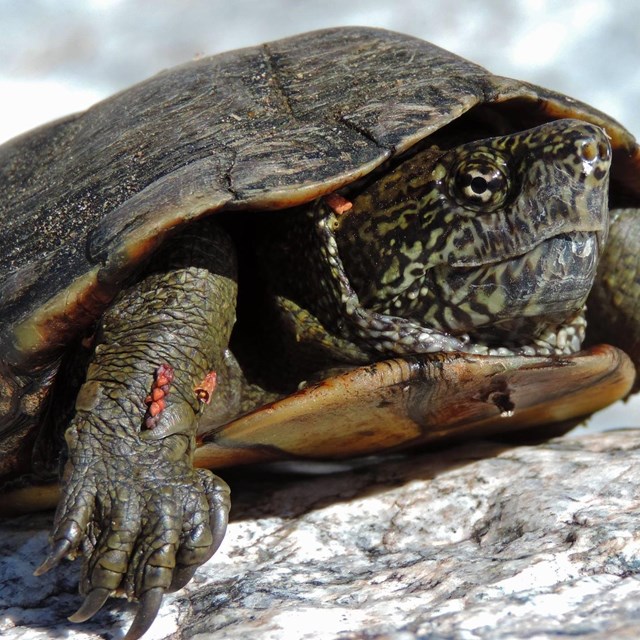|
Under-appreciated and sometimes feared, reptiles play an important role in the high-desert ecosystem. Lizards and snakes help control insect and rodent populations. In turn, both are potential meals for birds and mammals. Sonora mud turtles, which are easily spotted swimming and basking in Montezuma Well, depend on the abundance of small invertebrates and aquatic insects in the year-round supply of warm, fresh water. All reptiles are cold-blooded or, more accurately, "ectothermic", regulating body temperature via external sources rather than internal metabolism. A reptile's metabolic rate is very slow, but so are its energy needs. Since keeping warm in the desert does not require much work, reptiles are well adapted to this environment. What energy they do generate can be used for reproduction and finding food instead of heating and cooling. Of course, there are drawbacks to this lifestyle. Since they don't pant or sweat reptiles can't endure extremely high temperatures without shade. Nor can they endure prolonged sub-zero temperatures. When it's cold, reptiles hibernate or enter into a state of torpor. Food stored as fat in their tails helps lizards survive these long periods of inactivity, so losing a tail can be life-threatening.
|
Last updated: February 2, 2021



